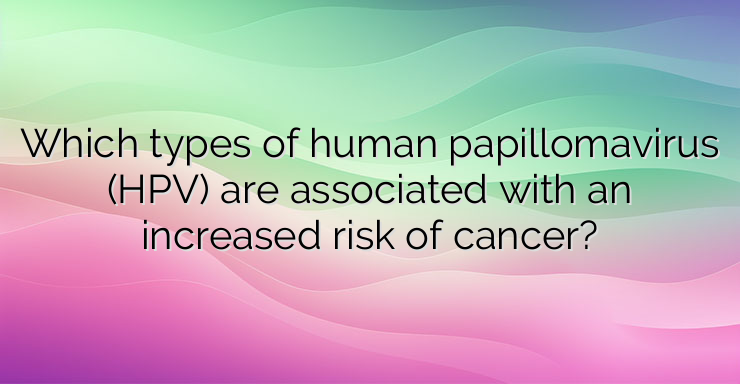Human papillomavirus (HPV) causes one of the most common sexually transmitted viral infections. Some low-risk HPV types cause genital warts, while a small number of high-risk types can cause cell changes that lead to cancer. Other types cause no symptoms. What are the common symptoms of human papillomavirus infection? Most often, HPV causes asymptomatic infection. In fact, most sexually active people contract HPV at some point in their lives without even knowing it. If an infection occurs, most people clear the virus spontaneously without long-term consequences. In addition, they become immune to that particular type of HPV. That being said, there are over 150 different types of HPV and it is possible for a person to be infected with a new type that may not be cleared by the body and end up causing symptoms and complications. Studies show that about 1% of people infected with HPV get the low-risk type that causes genital warts. After all, HPV is the cause of all common warts. Some types of HPV only cause warts on the hands or feet and can be spread by casual contact. In contrast, genital warts are caused by low-risk types that are spread through intimate sexual contact. Although there are several different types of low-risk HPV that cause genital warts, about 90% of these growths result from two specific types: HPV type 6; HPV type 11. As the name suggests, genital warts can appear on or around the genitals, including those of the female reproductive system (labia, vulva, vagina, clitoris, and cervix) and the male reproductive system (penis and scrotum). Warts can also appear in or around the anus, as well as inside the rectum when practicing anal sex, and in the mouth and throat or even on the lips when practicing oral sex. Genital warts are usually painless, fleshy skin growths that look like a cauliflower. It is possible to have only one wart or a group of them and they can be large or small. Genital warts often go away on their own without treatment, usually within the first two years. Others may need to be removed with liquid nitrogen, laser therapy, or surgery. Low-risk HPV types that cause genital warts are not associated with cancer risk. What complications does human papillomavirus infection cause? The bigger concern about HPV infection is that some high-risk types greatly increase the risk of certain cancers. There are approximately 14 types that can cause cell changes that can potentially lead to cancer, including cancer of the cervix, penis, rectum, vagina, vulva, mouth and throat. Those associated with the highest cancer risk include: HPV type 16; HPV type 18; HPV type 31; HPV type 45 is believed tothat human papillomavirus (HPV) causes precancerous tissue changes (called neoplasia) by integrating its genetic material into that of infected cells. Genes from high-risk HPV types appear to function as oncogenes, meaning genes that can cause cancer by causing cells to grow abnormally and out of control. Studies show that 4% of people who get HPV get the high-risk type, which causes changes in cells that can progress to cancer. There are six types of cancer inextricably linked to HPV infection: Cervical cancer. Almost all cases of cervical cancer are associated with HPV infection, with HPV type 16 and HPV type 18 accounting for 70% of cases; Cancer of the anus. About 90% of anal cancers are HPV-related. People coinfected with HIV and high-risk HPV are at up to a 70-fold greater risk of anal cancer than the general population; Cancer of the vagina (vagina). About 77% of vaginal cancers are associated with HPV, mostly HPV type 16, but also HPV type 18; Cancer of the vulva. About 70% of vulvar cancers are associated with HPV, primarily HPV type 16, but also HPV type 18; Penile cancer. HPV is associated with approximately 60% of penile cancers, with most caused by HPV type 16; Mouth and throat cancer. This type of cancer is associated with HPV type 16 in about 70% of cases. In general, HPV type 16 is the one most likely to cause cancer. Cigarette smoke can further increase the risk of HPV-related cancers by up to 30-fold, especially cancers of the mouth and throat. References: 1. Verywell Health. Signs and Symptoms of Human Papillomavirus (HPV) Infection 2. Centers for Disease Control and Prevention. Genital HPV infection – fact sheet 3. US National Library of Medicine. Warts: overview 4. National Cancer Institute. HPV and cancermostly HPV type 16, but also HPV type 18; Penile cancer. HPV is associated with approximately 60% of penile cancers, with most caused by HPV type 16; Cancer of the mouth and throat. This type of cancer is associated with HPV type 16 in about 70% of cases. In general, HPV type 16 is the one most likely to cause cancer. Cigarette smoke can further increase the risk of HPV-related cancers by up to 30-fold, especially cancers of the mouth and throat. References: 1. Verywell Health. Signs and Symptoms of Human Papillomavirus (HPV) Infection 2. Centers for Disease Control and Prevention. Genital HPV infection – fact sheet 3. US National Library of Medicine. Warts: overview 4. National Cancer Institute. HPV and cancermostly HPV type 16, but also HPV type 18; Penile cancer. HPV is associated with approximately 60% of penile cancers, with most caused by HPV type 16; Cancer of the mouth and throat. This type of cancer is associated with HPV type 16 in about 70% of cases. In general, HPV type 16 is the one most likely to cause cancer. Cigarette smoke can further increase the risk of HPV-related cancers by up to 30-fold, especially cancers of the mouth and throat. References: 1. Verywell Health. Signs and Symptoms of Human Papillomavirus (HPV) Infection 2. Centers for Disease Control and Prevention. Genital HPV infection – fact sheet 3. US National Library of Medicine. Warts: overview 4. National Cancer Institute. HPV and cancer


Leave a Reply